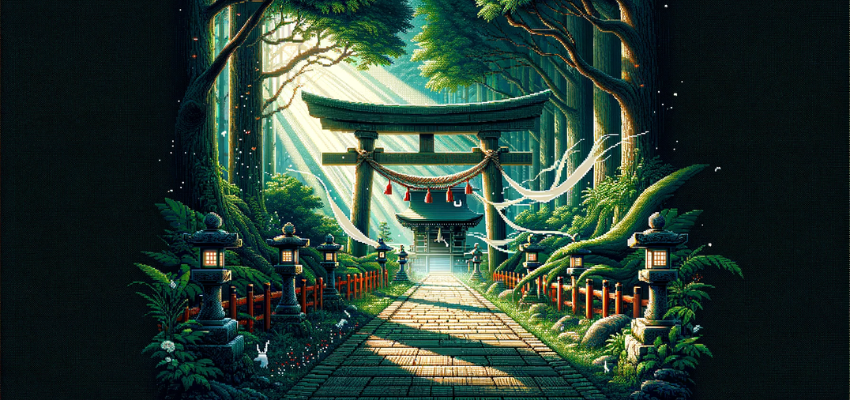I never considered myself a religious person. I don’t typically find the idea of religion very interesting. As someone with an undergraduate degree in history that might be somewhat surprising, as religion tends to find itself at the center of history all the time. So it is interesting now that I find myself exploring Shinto (one of Japan’s most popular religions) for the final research project of my History of Japan class.
What piqued my interest in Shinto?
It wasn’t until 2018 when I visited Japan for the first time that I found myself genuinely interested in religion. Shinto in Japan is such a funny thing. Not funny like “haha”, funny as in peculiar. If we compare religion in Japan to western countries such as Canada and the United States we see some odd numbers.
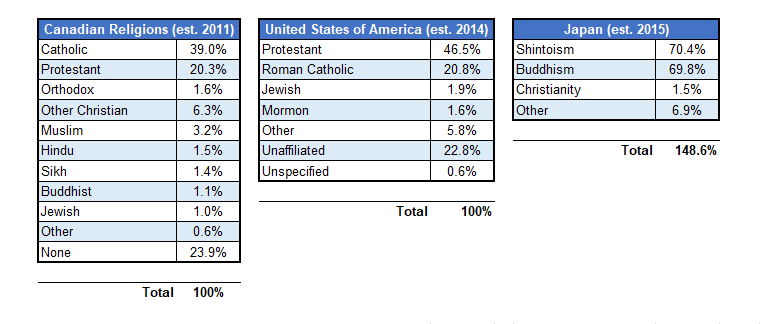
Looking at the charts above, both Canada and The United States add up to approximately 100% of the population. However, Japan has both Shintoism and Buddhism at about 70% of the country’s religions. Their religious breakdown adds up to over 148%. That means Shintoism and Buddhism share followers.
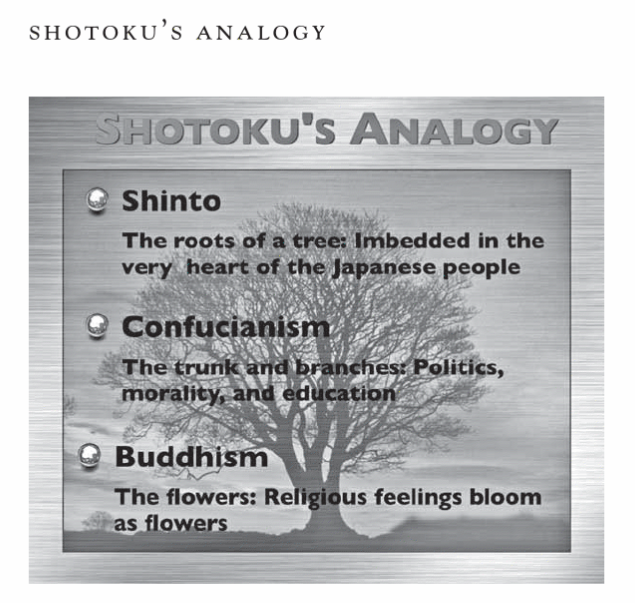
According to Roger J. Davies in his book, Japanese culture : the religious and philosophical foundations, “Prince Shotoku, the first Japanese envoy to China during the Sui Dynasty and the man credited with introducing Buddhism to Japan, coined [the above] analogy to describe Japanese religious practices” (source, p. 39). The analogy that Prince Shotoku develops is that of a tree. One organism with multiple parts.
Shinto’s role in the tree is the roots, it is described as being “Imbedded in the very heart of the Japanese people”.
Another peculiarity is that Shinto has no actual textual doctrine. The closest thing they have to religious texts would be The Kojiki, which translates to “Records of Ancient Matters” and is considered to be one of the oldest literary works in Japan (source).
So if there is no true textual doctrine for Shinto, how is it studied and practiced? Shinto tends to focus on ritual behaviour rather than doctrine. Instead of prayers of forgiveness, Shinto instead focuses on the physical well-being and temporal prosperity of people. Shinto manifests itself in everyday social life of the Japanese people through their daily routines, practices, and motivations than it does to any formal beliefs or philosophy (source, p. 48).
This was clear on my trip in 2018.
My own experience with Shinto
On New Year’s Eve, we found our way to Meiji Jingu, a Shinto shrine in Tokyo, Japan. We lined up to visit the shrine for Hatsumode, literally translating to “the first (Hatsu) shrine visit (mode)” (source). We waited approximately 2 hours in a line of multiple thousands of people to take part in the traditional Shinto prayer at the temple. According to Japan Guide, the shrine welcomes over 3 million visitors within the first few days of the new year (Hatsumode). This year, however, due to COVID-19, those numbers will be significantly lower (source). It was clear this was a popular destination for people in Japan. The demographics in the crowd ranged from young children to the elderly and the atmosphere was unlike any religious gathering I have ever seen or been apart of.
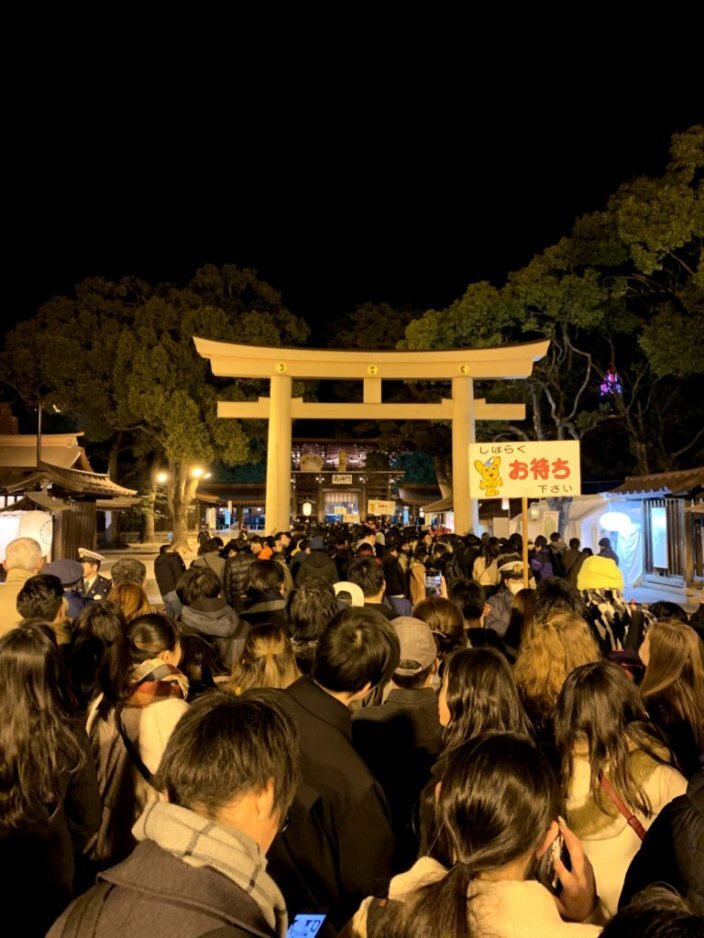
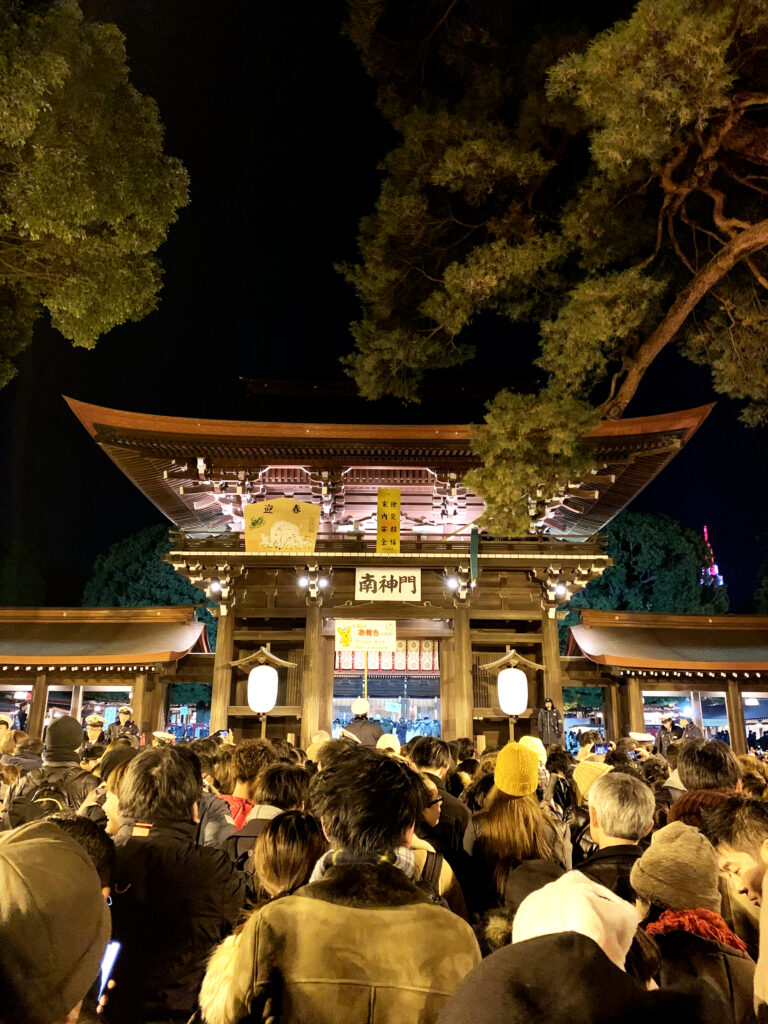
It felt different and very uniquely Japanese. We tossed in our Japanese coins, bowed twice, clapped twice, then prayed to the kami (spirit) as best as we could. We bowed one final time and stepped away from the shrine. To this day, it remains one of the highlights of my trip in 2018.
So why explore it for my final HIST: 2806 project?
In the past few years, I have visited Japan twice. During both trips I saw very clearly the importance and impact of Shinto in Japanese culture. We will return to Japan once the COVID-19 pandemic is over. Exploring Shinto will help me gain a better understanding of a very unique and foundational practice in Japanese culture and it’s people.
References
- Boyd, J., & Nishimura, T. (2004). Shinto Perspectives in Miyazaki’s Anime Film “Spirited Away.” The Journal of Religion and Film, 8(2).
- Davies, R. (2016). Japanese culture : the religious and philosophical foundations. Tuttle Publishing.
- Hall, J. (1991). Japan, from prehistory to modern times. Center for Japanese Studies, University of Michigan.
- Hardacre, H. (1989). Shintô and the state, 1868-1988. Princeton University Press.
- Ono, M., & Woodward, W. (1962). Shinto, the Kami Way. Tokyo, Tuttle.
- Sansom, G. (1938). Japan, a short cultural history. Cresset.
- Yasumaro, Ō., & Hamm, L. (2014). The kojiki: an account of ancient matters. (G. Heldt, Trans.) (Ser. Translations from the Asian classics). Columbia University Press.

